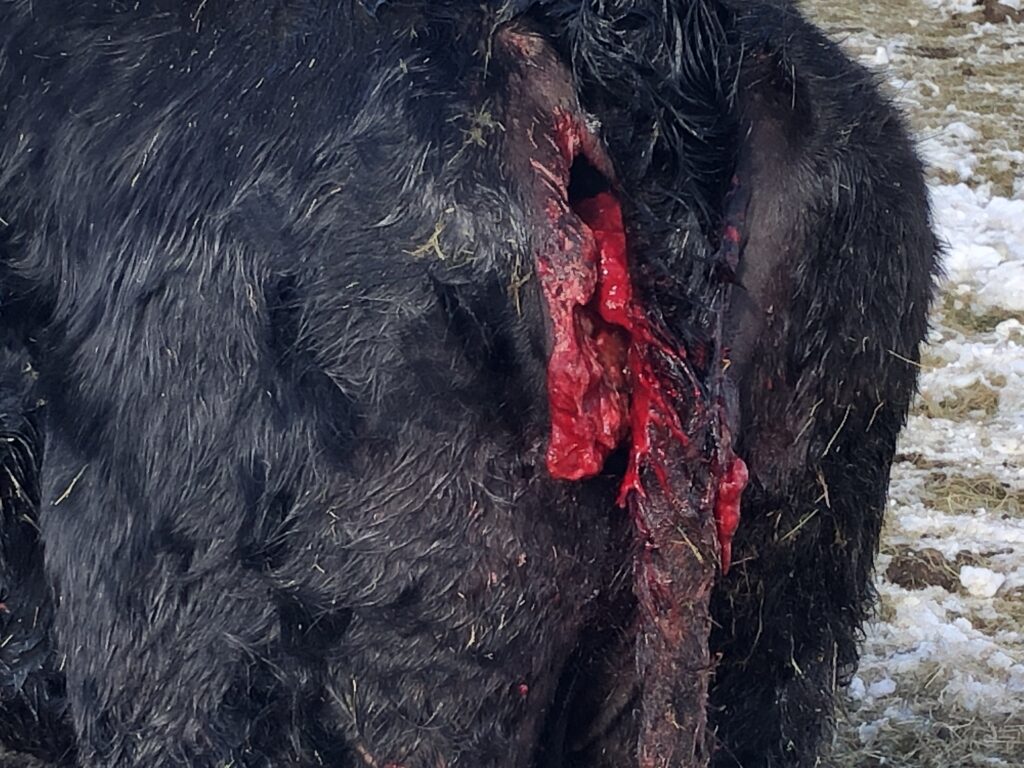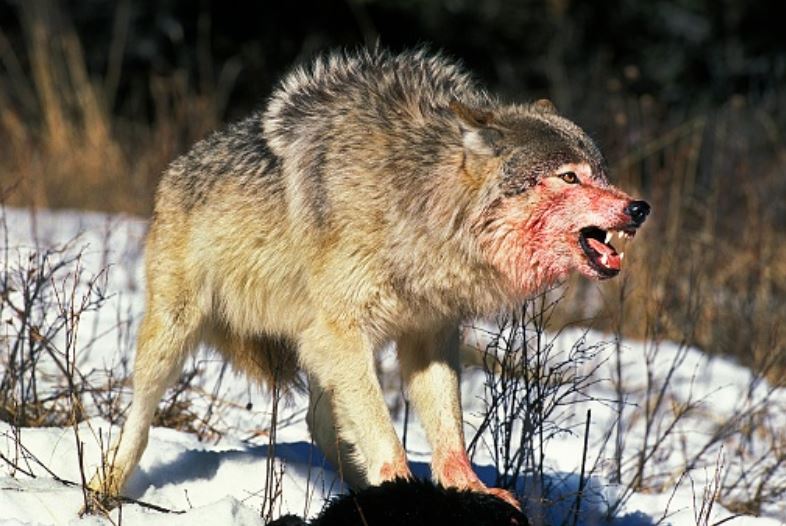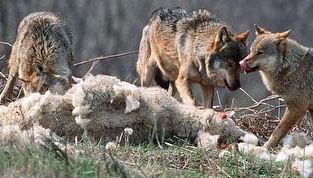Equine Welfare Crisis Looms with Reintroduction of the SAFE Act
The new administration and resulting shift in political climate have brought on a dramatic escalation of animal extremist groups seeking to advance their agenda on a number of fronts. At the national level, the reintroduction of the SAFE Act is of great concern to the horse industry and livestock producers.
Here at Western Justice, we firmly believe in unbiased education of both the horse industry and the population at large. Our position on the SAFE Act is based on animal welfare and what is best for all American horses as well as the industry. When legislation like this is pushed by agenda riddled extremist groups it is important to stand up for our industry and be fully informed.
Initiated in 2013 as the Safeguard American Food Exports Act, the SAFE Act has now been rebranded as the Save Americas Forgotten Equine Act but has the same intent: to completely ban the practice of humanely processing horses for consumption in the US, as well as banning the shipment of horses to other countries to be processed.
When considering this issue, it must be noted that:
• The captive bolt gun utilized in modern processing plants has been determined by major veterinary medical associations to be a humane end of life option for horses.
• Most horses and other livestock are private property; owners have the right to decide the most appropriate humane end of life option for their animals.
• Humane horse processing is a necessary component of the overall equine industry.
The SAFE Act is currently being championed by animal extremist groups such as the American Society for the Prevention of Cruelty to Animals (ASPCA), the Animal Welfare Institute (AWI), the Humane Society of the United States (HSUS), the Humane Society Legislative Fund (HSLF), and Return to Freedom Wild Horse Conservation (RTF). Such groups have a long, sordid history of fundraising with blatant misinformation, preying on a well-meaning, mostly urban population that is unfamiliar with the realities of livestock management and sound animal science.
The shift in title and tactics is a perfect example of how animal extremists manipulate information and its presentation to the public in order to profit. The SAFE Act was originally promoted as a way to keep allegedly drug-tainted horse meat from entering the foreign food supply, based on the overt lie that all American horses are regularly treated with a number of drugs and are therefore unsafe for human consumption. With lack of significant progress with that angle, animal extremists have now switched to an equally absurd platform.
The last domestic horse processing plants closed in 2007. Since that time, unwanted horses have been shipped to Mexico or Canada, normally averaging 100,000 annually, but with a decline in recent years. With over 9.2 million domestic horses in the US, it is less than 2% of the horse population annually.
Combined with an economic recession, domestic plants closing in 2007, created a perfect storm—and a perfect opportunity for animal extremists and the equine rescue network to step up to the plate to absorb the glut of unwanted horses. They did not.
Instead, even with the availability of foreign processing, the nation saw a drastic increase in cases of neglect, abuse, and abandonment of horses, with the rescue network turning unwanted horses away in droves.
Promoting the rebranded SAFE Act is undoubtedly already a cash cow for extremist groups, but while they collect hundreds of thousands of dollars in donations annually, they have historically done very little to directly fund the rehoming and subsequent care of horses bought at the low end of auctions, despite having literally countless opportunities to do so.
Ironically, the AWI website states: “Last year (2020), more than 37,000 horses were exported for slaughter, and research published in 2017 found that 2.3 million Americans have the interest and resources to adopt a horse.” Thus, by their own admission, these animal extremist groups are stating that millions of people are supposedly willing and able to assume care of a horse, and yet there are still thousands of horses being shipped abroad to be processed. That math just doesn’t add up.
While it is true that the occasional gem of a horse turns up in the “kill pen”, the often overlooked and simple truth is that the majority of processing-bound horses are there for a reason. If people truly wanted problematic “project” or “pasture ornament” horses, they have always had exactly the same opportunity to buy them at auction as the so-called “kill buyers.” In addition, today’s world of social media and hyperconnectivity makes it easier than ever to rehome horses of all kinds.
So, this begs the questions: what do proponents of the SAFE Act think will happen if it passes? Where will those thousands of unwanted horses go, and who will pay for their feed and care? Animal extremist groups have already proven that the majority of their money isn’t spent on actual animal care.
As it is, the equine rescue network struggles with overpopulation and accepting new horses. No matter how noble their intent, rescues still must look at their bottom line and the expenses their wards incur. Simply stated, many times rescues cannot afford to take in additional horses, especially those with chronic issues that require continual, often expensive maintenance. Reputable rescues, of which there are many, will turn away horses that they know they cannot care for properly. This then opens the door for the less-than reputable rescues to take horses in regardless of their ability to care for them. Unfortunately, regardless of the existence of reputable rescues that do good work, the overall rescue network has been plagued with scandals regarding animal abuse and misappropriation of funds.
As we stated earlier, wild horses are now the poster child for the SAFE Act marketing ploy. It is not lost on many in the industry that the Bureau of Land Management’s Wild Horse & Burro Program is the perfect example of how problematic and expensive lifetime care of unadopted horses can be. It is a true financial quagmire. Each year, the majority of the program’s budget is spent on the feed and care of over 50,000 horses in long-term holding. Most of these horses are known as “three strike horses,” meaning that they were offered for adoption three times but repeatedly passed by. Despite several opportunities to be adopted, massive advertising campaigns and cash incentive programs to adopt, these thousands of so-called mustangs are left unadopted and go on to live out their lives at immense taxpayer expense.
Again, where are those 2.3 million Americans that the AWI claim have the interest and resources to buy a horse? If they are indeed buying horses, they aren’t shopping in the kill pen or BLM corrals.
In addition to the 50,000 mustangs in long-term holding, there are currently estimated to be over 95,000 still on the range. The total appropriate management level established with the passage of the Wild Horse & Burro Act of 1971 was determined to be 26,770, allowing for native wildlife and mandated multiple use of federally managed lands. This means that there are 70,000 more horses on the range than there should be, causing incalculable environmental damage and drastically diminishing resources for all range-dwelling animals.
Despite such hard numbers as inarguable proof of the excess mustang population both on-range and off, the extremist groups pushing the SAFE Act are very deliberately spinning their false narrative to manufacture outrage and garner donations. Anyone with common sense can see that with approximately 120,000 total excess mustangs in the United States, those horses aren’t being shipped anywhere.
Nevertheless, extremist groups pull at the heartstrings of potential donors, referring to federally managed mustangs as “our” horses. While this might apply to federally managed mustangs living on the taxpayer dole, it certainly is not true for privately owned horses.
The “save our American horses” line intentionally implies an entirely nonexistent collective ownership of privately owned horses. Supporters of the SAFE Act are therefore bizarrely assuming the right to dictate the end-of-life management choices made by private, individual horse owners. Yet, these same disillusioned people are obviously not taking any responsibility for the domino effect issues they are all too willing to cause.
“Our” government subsidized mustangs have the benefit of seemingly bottomless taxpayer pockets. If the SAFE Act were to pass, the thousands of privately owned horses that might have been humanely processed and put to productive use would not have the luxury of unlimited funds to support their feed and care. It’s very likely that, instead of a humane, productive end, those horses would face a situation like the equine welfare disaster that began in 2007.
As was previously, painfully demonstrated after domestic plants closed, the keyboard warrior animal extremists who think it’s cute to claim other people’s privately owned horses as “our horses” would suddenly be nowhere to be found. Nor would the extremist groups with their multi-million-dollar war chests. True equine welfare is not their concern after all, it’s just a great way to get attention and raise donations.
You can read more about the SAFE Act and our position at: https://b62996ef-39a0-412e-a992-beb092c4d11c.filesusr.com…
Please become a member of Western Justice: https://www.westernjustice.info/memberships





All the horses in all the different herds do Not look like this! Skin and bones, Stop letting the rangelands be eaten by the cattle and other livestock. The horses have managed to survive for “ALL” these years with no help from humans. It cost tax payers more to round them up (inhumanely I might add) and keep them in over crowded pins then it does to leave them alone or better yet help them out put out some water tanks here an there a bale of hay….
Why do humans always thing changing things make it all better?
Cows are a bigger problem and neither the federal agencies or main stream green groups will admit it.
Obviously you are the environmental catastrophe. These horse were here before you and made the way for your ancestors to settle and possible for you to exist along with God of course who made you and all creatures to inhabit the earth. I’m sure you think of me as an extremist as I do you. Slaughter houses are cruel horrible places for anything to die they are not the answer. There are many advocate groups fighting for the wild horses and have found a way to control the population if people like you and the BLM good work harder to do things the right way. I know all this is going in one ear and out the other. I’m just on your list of Neurotic people, there’s no educating people like you. Obviously you are not a believer in God either or you would know the value of life of all kinds. I am an animal advocate but I am not unrealistic. I am just believe that all life matters.
People like you make me so mad, you are the reason the worlds in shape it’s in, easy come easy go attitude, if it bothers you get rid of it. Out of sight out of mind.
You and thoughtless people like you are the ruin of our nation. Your irresponsible thoughts lead to destruction of our eco system and environment and the value of life. I pray you do not have children that will learn what they live. In the mean time if you do have kids it’s time you get your head out of your ass and and except responsibility for your actions.
Animals have more intelligence and diffenetly more heart than you.
It’s the Spaniards who brought horses when they colonized Mexico.
And Mother Nature and the Indians propagated the herds.
Feral horses have been an environment wreck for decades now.
Nothing changes till USA folks learn to correctly manage livestock.
Slaughter some darn horses and ship the meat to Europe.